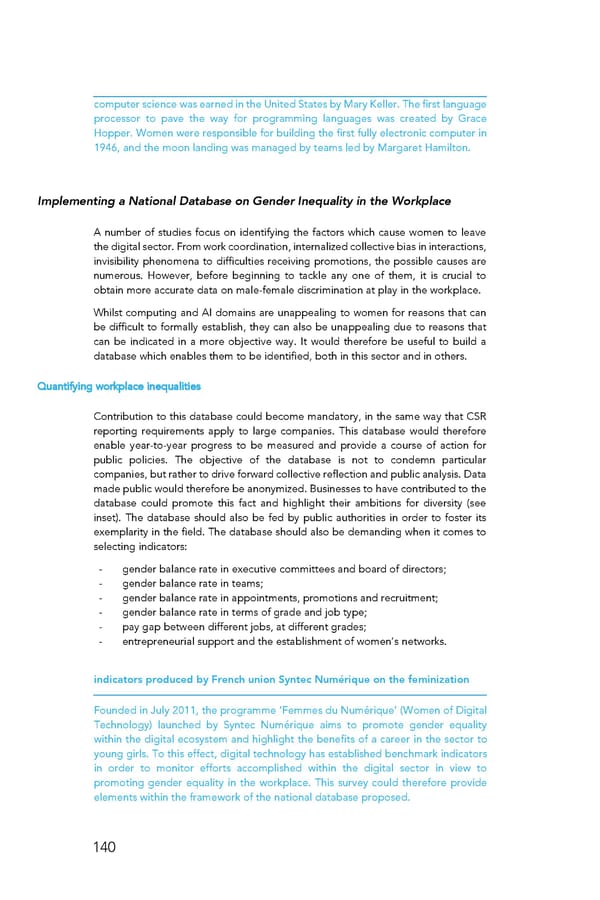computer science was earned in the United States by Mary Keller. The first language processor to pave the way for programming languages was created by Grace Hopper. Women were responsible for building the first fully electronic computer in 1946, and the moon landing was managed by teams led by Margaret Hamilton. Implementing a National Database on Gender Inequality in the Workplace A number of studies focus on identifying the factors which cause women to leave the digital sector. From work coordination, internalized collective bias in interactions, invisibility phenomena to difficulties receiving promotions, the possible causes are numerous. However, before beginning to tackle any one of them, it is crucial to obtain more accurate data on male-female discrimination at play in the workplace. Whilst computing and AI domains are unappealing to women for reasons that can be difficult to formally establish, they can also be unappealing due to reasons that can be indicated in a more objective way. It would therefore be useful to build a database which enables them to be identified, both in this sector and in others. Quantifying workplace inequalities Contribution to this database could become mandatory, in the same way that CSR reporting requirements apply to large companies. This database would therefore enable year-to-year progress to be measured and provide a course of action for public policies. The objective of the database is not to condemn particular companies, but rather to drive forward collective reflection and public analysis. Data made public would therefore be anonymized. Businesses to have contributed to the database could promote this fact and highlight their ambitions for diversity (see inset). The database should also be fed by public authorities in order to foster its exemplarity in the field. The database should also be demanding when it comes to selecting indicators: - gender balance rate in executive committees and board of directors; - gender balance rate in teams; - gender balance rate in appointments, promotions and recruitment; - gender balance rate in terms of grade and job type; - pay gap between different jobs, at different grades; - entrepreneurial support and the establishment of women’s networks. indicators produced by French union Syntec Numérique on the feminization Founded in July 2011, the programme ‘Femmes du Numérique’ (Women of Digital Technology) launched by Syntec Numérique aims to promote gender equality within the digital ecosystem and highlight the benefits of a career in the sector to young girls. To this effect, digital technology has established benchmark indicators in order to monitor efforts accomplished within the digital sector in view to promoting gender equality in the workplace. This survey could therefore provide elements within the framework of the national database proposed. 140
 For a Meaningful AI - Report Page 138 Page 140
For a Meaningful AI - Report Page 138 Page 140